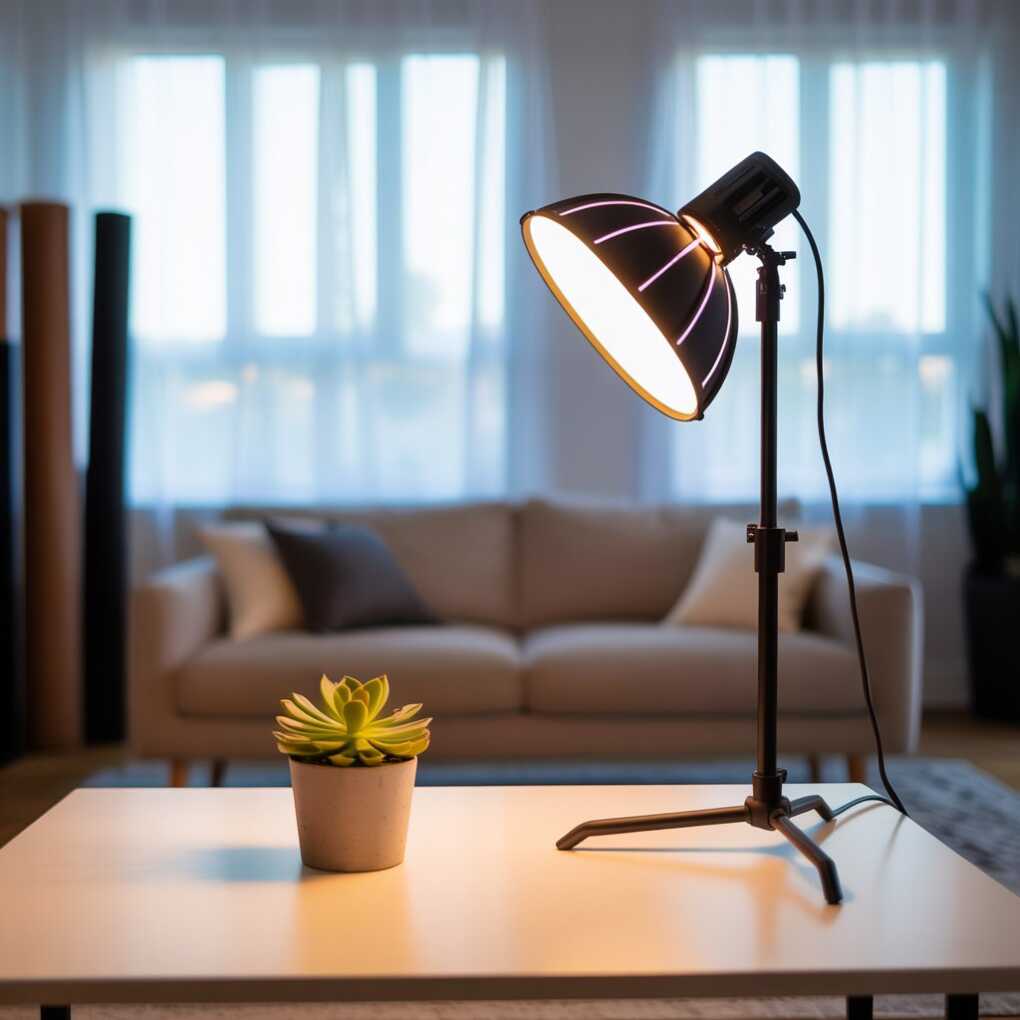Getting to decide on the right light stand for your home photography setup is always exciting. You start imagining the perfect lighting angles, the creative shots, and how your space will finally look like a real mini studio. It’s one of those purchases that makes you feel like your setup is coming together.
But then the question hits: which one should you actually choose? With so many types, heights, and features, it’s easy to feel unsure about what will really work for your space. Should you go for something compact or taller, lightweight or sturdy? Well, worry not. That’s exactly what this article is here to help with. We will help you understand what matters most, so you can pick a light stand that’s perfect for your setup.

Keep reading.
Choose the Right Height and Reach for Your Space
Before buying a light stand, start by thinking about your space. Home photo setups are often smaller than professional studios, so measuring the area where you’ll shoot is essential. The right height depends on what you’re photographing. For example, portraits need taller stands for overhead lighting, while tabletop or product shots require shorter options.
Most options range from about three to ten feet in height, so it’s worth checking how that fits your space before you buy. Adjustable, foldable stands are a smart choice for home setups since they’re easy to move and store. If your studio space is tight, compact designs help you stay flexible without sacrificing stability.
And don’t worry. You don’t need to skip from site to site, finding them. There are plenty of reliable retailers like Adorama that offer a full range of Light Stands online, with options for every setup. From slim, lightweight stands for small spaces to heavy-duty ones built for powerful lights, there’s something for every type of home studio. You can browse, compare, and order your favorite style without even leaving home.
Pay Attention to Weight Capacity and Stability
A good tool isn’t just about how tall it gets — it’s about how strong it stays. Your lights, reflectors, and softboxes can be heavy, and a weak stand might not hold up well under pressure. When choosing, always check the weight capacity to make sure it supports your heaviest setup with room to spare.
Stability also matters, especially on smooth floors or uneven surfaces. Look for options with wide legs, locking braces, or added sandbag hooks. These features prevent tipping and help you keep your lights steady throughout long shoots.
Air-cushioned stands are another smart choice. They protect your gear when lowering heavy lights, preventing sudden drops or jolts that could damage equipment. If your lighting setup changes often, consider getting multiple stands with different strengths.
Look for Quality Materials and Build Strength
When you invest in a light stand, you want it to last. That’s why build quality and materials matter as much as design. Most light stands are made of aluminum, steel, or carbon fiber, each offering different advantages.
Aluminum is lightweight and perfect for portability, making it a favorite for home photographers. Steel is stronger and ideal for larger lights, but it can be heavier to move around. Carbon fiber offers the best of both worlds — strength with minimal weight — but usually comes at a higher price point.
Beyond materials, pay attention to details like locking knobs, leg joints, and pole mechanisms. High-quality components ensure your tool stays secure and stable during use.
Consider Portability and Maintenance for Long-Term Use
If you move your lighting setup around the house or between rooms, portability becomes an important factor. Lightweight stands are easier to carry, while foldable legs make storage simple when your shoot is done. Look for models with quick-release mechanisms that allow fast setup and breakdown.
Maintenance also plays a big role in keeping your equipment in top shape. Regularly check for loose screws, clean the joints, and store your stands in dry areas to avoid rust or corrosion. Using small sandbags for added balance can also reduce strain on the stand’s structure, helping it last longer.
Treating your stand like a long-term investment pays off. It stays reliable, looks professional, and makes every photo session more efficient.
Closing Lines
Choosing the right light stand might not seem like a big decision, but it has a major impact on your photography. The right stand keeps your lights steady, your setup organized, and your images consistent.
By considering height, stability, material, flexibility, and portability, you’ll find a stand that perfectly fits your home studio. Explore trusted options from reliable retailers such as Adorama, and you’ll discover how much smoother and more enjoyable your photo shoots can be. After all, great lighting begins with a solid foundation, and that foundation starts with the right stand.
